Japanese kissaten are possibly the last remaining example of what a coffeehouse once looked like. The term directly translates to “shop for tea drinking”, and originally it was a place where tea and sweet treats were served, however this direct translation is now somewhat misleading. Commonly described as a “retro-style” café, and with a clear Western European influence, they give us a modern-day feeling for what may have been found in the famous old coffeehouses of Amsterdam and Vienna.
Some housekeeping before we get into the thick of it. The Japanese word “kissaten” accounts for both singular and plural forms, and I’ll be using it in this way throughout my writing. Sometimes I’ll use the shorthand “kissa” when referring to a specific kissaten. Furthermore, though their heyday is of a bygone era, I’ll separate kissaten from cafés/bars/restaurants and refer to them as their own industry of service for the purposes of this piece.
Whether it’s the vinyl records playing or the designated smoking areas inside, stepping into one has the effect of sending you back in time. Even though they were originally tearooms, many kissaten started offering coffee and developed more complex menus. The first coffee shop opened in Japan in 1888 and tearooms existed long before then, however the first kissaten, in the form we’re discussing here, started appearing in the 1920s and became popularized shortly after World War II when coffee imports into Japan boomed. Their popularity continued to rise for several decades, and they became mainstream in a society that wasn’t ready to embrace the loud café culture developing in the West. Kissaten peaked in the 1970s, and it was during this time that jazz-kissa (music focused), manga-kissa (literature focused), and other variations of kissaten started appearing. It is estimated that at the café concept’s peak 150,000 were in operation across Japan. To refrain from pigeonholing every kissaten into one definition, in this journal I’ll be breaking down traditional kissaten as well as jazz-kissa. The styles that evolved throughout the past century served a variety of purposes, however, due to changing tastes and preferences in addition to the concept itself losing popularity, they have faded in and out of existence. Nevertheless, the traditional kissaten as well as its musical counterpart have withstood the test of time. The unique experience remains a humble alternative to a contemporary coffee shop.
A traditional kissa is an art deco style café which serves as a multigenerational gathering space for artists, intellectuals, and businesspeople alike looking for a calmer setting than that of a fast-paced third-wave café space. Basically, folks looking for a place they can spend a few hours in will often choose a kissaten. Some come here on dates, others to sign deals, and some just want somewhere to read the newspaper with occasional cigarette breaks in the courtyard. There is a specific menu of food items with typically just a simple offering of a house blend of coffee and two or three teas. The menu includes a baked egg sandwich, fruit sandwich, cheese toast, rice curry, some assortment of dessert, as well as tea and coffee. There is room for experimentation though, with many kissaten going beyond this menu, creating their own style. But the idea is to put less emphasis on the menu, and more emphasis on the people you’re with. For the music aficionados, a jazz-kissa is a kissaten where one can enjoy tunes during their visit. Jazz-kissa is a catch-all term for kissaten which, in addition to their café program, emphasize music. It does not have to strictly be jazz that plays, but of course many of the famous ones do. However, lots of them play hip-hop, city pop, classical music, and other genres. Often the music is played via vinyl player, but there are examples of jazz-kissa which host live performances.
Between the kissaten of Kyoto and Nara, we have some fantastic examples to convey the concept. Kyoto itself is a city which blends tradition with modernity in a way that’s not seen anywhere else on Earth. Centuries old techniques, born out of patient development, serve the demands of the fast-paced society of today, managing to do so in an uncompromising fashion. In Nara, the ancient capital of Japan, you get the sense that the city wants to preserve the kissaten culture of the 20th century despite present day expectations. Beyond kissaten, Nara typically looks to maintain its ancient roots in most facets, and it becomes a destination to feel the real Japan of the past. Both cities’ ability to blend tradition with modernity in a practical manner that remains true to their history is what makes them so fascinating. Even though Kyoto is dominated by an older population, the younger generation is still working in and going to their local kissaten, maintaining the tradition. It is cool to see that this multigenerational transfer of information is occurring, and while kissaten culture had been declining around Japan in the early 2000s, that certainly was never the case in Kyoto. The city seems to be leading the resurgence in the concept’s popularity.
There are many reasons for this resurgence. Millennials long for the nostalgic feel brought on by the retro interiors. A kissaten, where alcoholic beverages are often omitted from the menu, is also more appealing for Gen Z, which is drinking less alcohol on average than previous generations. Additionally, some kissaten are also adopting principles from specialty coffee and the two approaches are starting to blend. For example, Ogawa Coffee places huge importance on its coffee program, with the kissa emphasizing lighter roasts, coffee that’s traceable, and a commitment to giving its baristas a platform for growth in their craft. This is a development away from the typical norm, but it works because the rest of the traditional experience is maintained. Third-wave coffee is certainly still in full swing, but shifting preferences coupled with a portion of Japan’s younger generation’s new affinity for the culture of the past signals a potential return for kissaten to the mainstream. What’s more is that the longstanding kissaten are at the forefront of this new embrace of the café style, maintaining their place in the industry’s history. Maeda Coffee, Inoda Coffee, and Ogawa Coffee, known as “the big three” kissaten in Kyoto have each been around for over fifty years and are all experiencing a recent uptick in popularity. So not only is there a new demand for kissaten, but part of the interest is also to preserve the established ones rather than hop on any trends and open new ones. Upon entering one of these kissaten, it’s no surprise why.
My first experience of a kissaten was at Inoda. There’s a reception area upon entry with seats for those waiting on a table. This reception area also has a point of sale for to go orders and souvenirs. The wait wasn’t long, only about ten minutes when I went. There is a main restaurant space with a large, windowed back wall, looking out into the courtyard area; a typical feature of kissaten. I was seated in a secondary building, which you get to by exiting the main dining area and going through a hallway which connects to the courtyard you can see through the aforementioned large window. The décor of this secondary dining hall is a prime example of the 1920s art deco style commonly associated with these establishments. Your eye immediately finds the red seats, which match the red curtains of the windows. Two different coffees are offered here called Arabian Pearl and Colombian Emerald, a dark and a medium roast respectively. They are batch brewed coffees and can be served black, au lait, as an iced coffee, Vienna style with whipped cream, or as a coffee float. There is also an assortment of juices, lemonade, and sodas. Of course, there is tea as well. Inoda has a menu of six sandwiches, two spaghetti pastas, a beef and rice plate, and a mushroom soup. A specific breakfast plate is sold until 11am as well. The most extensive part of the menu is the dessert menu with nine items plus four cakes.
The next one for me was Maeda. After walking through a reception area similar to the one at Inoda, you walk into the main dining room which is separated into smoking and non-smoking sections. The first question you get asked upon entering the kissa is if you would like to be seated in the smoking or non-smoking section. Maeda features a coffee menu with two blends and two single origins, Brazil and Ethiopia. The blends are broken down in the menu with their origins, aromas, and taste profiles presented. Each coffee has a roast level scale and a flavor wheel as well. The menu in general is rather expansive and broken down into breakfast and dinner options. It features a traditional kissaten menu, but there are several additional sandwiches and other menu items available.
Ogawa rounds out “the big three”. With greater emphasis on their coffee roasting program than some of the other kissaten you might experience, this kissa features a considerable lineup of single origin coffee. They speak extensively about their desire to roast great coffee in a tone which mirrors many third-wave coffee roasters. In addition to that, taking care of coffee producers and a well-developed barista program are key parts of their mission. In 2015, when Ogawa expanded to Boston, bringing the traditional kissaten experience out of Japan and to the US, they demonstrated their willingness to make the kissaten more approachable to a global audience. They have been a marquee example of leaning into the styles and practices of contemporary coffee but still maintaining their original purpose.
This next place stands alone in this piece as an entirely different type of tearoom than the others. I chose to include it because while it isn’t a traditional kissaten like the others explored here, it is by far the oldest establishment on this list and speaks to a tradition much older than the kissaten of the 20th century and today. Ippodo is a kissaten that has maintained its root purpose and has avoided any introduction of coffee. This is a tearoom in the truest sense. The menu features only teas, but there are lots of them. Matchas, senchas, gyukoro and more, this kissa is a window into Japan’s tearoom culture before globalization forced a change in the concept. While it differs significantly from what kissaten came to mean, it is still an important one to experience as it adheres to an approach that is several centuries old. In operation since 1717, the name Ippodo was bestowed upon the shop by the imperial family. Ippodo’s tea list is made up entirely of teas grown in Kyoto prefecture. They aim to preserve the ancient taste of Kyoto, as they put it, and the service is reminiscent of chanoyu, a traditional Japanese tea ceremony. A historic site to behold, this kissaten was perhaps the most humbling of the ones I spent time in.
Also historic in its own right is Smart Coffee. It’s an important one to mention, as it is one of the oldest traditional kissaten, having first opened in 1932. This one had the longest line out of the kissaten I visited. You can see why it’s so popular when you step inside though, this kissa has the effect of sending you back in time more than any of the others. The best part is all the coffee is roasted in-house, so the aromas inside are sensational. But it was another very old kissa which captivated me most. It’s called Salon de thé François, and being from 1934 it has a similar time travel effect to Smart Coffee. It’s cash only and no photos are allowed inside. In terms of food, it features strictly a dessert menu alongside a coffee and tea selection. In addition to the dessert menu, you get presented with a second card which has special cakes listed; presumably these change every so often. They also serve beer here too. This is a much more intimate space. It is a lot smaller but still maintains the common layout with a main dining room and a second dining room, with a window to a small courtyard. French gothic stain-glass windows feature in the walls and in addition to the windows, the walls are adorned with Impressionist paintings. All very French, which makes sense as the kissa is an ode to 19th century French painter Jean-François Millet. The tables are square and organized in a linear fashion, in contrast to the round tables of Inoda. This type of setup is more tailored to direct one-on-one conversation, creating a good place for dates. The staff uniform is a plain look with a black gown over a white undershirt. But the staff uniform and dessert menu are not why I wanted to talk about Salon de thé François. The real reason for it being mentioned extensively here is that the kissa was founded by Shōichi Tateno, a legendary figure in Japan’s labor movement. It was a secret meeting space for socialist activists during the 1930s and 40s in Japan. In a time of strict government control, this kissa was where significant anti-war and anti-fascist campaigns were born. Not only that, but this is also where radical art was allowed to flourish at the time. Anti-fascist artists found refuge and produced many political ads, cartoons, and other works here. A famous anti-fascist newspaper, Doyōbi, was even produced at the kissa. Tateno invested much of the profits from the kissa into his political interests, and Salon de thé François became a major source of funding for labor and anti-fascist movements in Japan. It is truly one of the more culturally and historically significant kissaten and is certainly a must visit when in Kyoto.
While the kissaten of Kyoto carry much historical significance, the kissaten in Nara give a look into what the scene may have once looked like in the mid-to-late 20th century, in terms of variety. When I took a break from befriending deer in Nara Park, I was walking around town surveying some of the kissaten and I found there to be a significant number of them doing something a little bit different from the traditional kissaten in Kyoto. For example, Kissa 52 is a small space serving coffee and cocktails on a bar top. The addition of mixed drinks is unique amongst the crop of kissaten I had been to prior. The food menu is atypical as well, just toast with various options for toppings. Coffee and tea are still served in the standard formats of a traditional kissaten in addition to juice and house soda options similar to Inoda in Kyoto. An old school jukebox stands on the wall across from the bar area, and is rather affordable so you can play tunes all night. The interior is still an art deco style, but it’s closer to an American speakeasy than it is to the more European style of a traditional kissaten.
One of the fascinating things about kissaten is that each one you visit has its own little quirks and nuances. The first kissaten where I was required to take my shoes off before entering was Saryo Zeze, located across the street from Nara Park. It was a humbling way to kick off this more upscale kissaten experience. The style serves more as a tearoom-like experience. The prices are on the more expensive side, but maybe that’s to be expected when there is a chance a might deer walk across the courtyard while you sip tea. It’s a very pretty place, compounded by soothing ambient music which plays over the speakers. It features a typical kissaten interior and serves a traditional menu. The walls are sliding windowpanes that allow you to look out into the outdoor courtyard, and I imagine these doors open in the summertime.
We’ve reached the point where I get to talk about my favorite kissa. Cherry’s Spoon in Nara is absolutely stunning in every way. I feel like this one combines all the things I had picked up in the other kissaten. It’s located in what used to be a kimono store, with tatami mats as the flooring, a feature typically found in kimono stores. It’s seated floor dining on the mats, and definitely no shoes allowed on the mats. Gorgeous tapestries adorn the walls, and the back wall is a massive window which reveals a courtyard, giving it that classic kissaten look. Soft jazz plays over the speakers, a man is reading the newspaper, and the whole place is like something out of a storybook. It features an uncomplicated traditional food menu, but I was blown away by the coffee offering. A house blend and then a multitude of single origins served as either espresso, pour-over, or siphon brewing. I spent hours here reading, writing, and just sitting with my thoughts. It gave me a chance to reflect on my trip to Japan, and I’ll often think about and cherish the time I spent here.
A traditional kissaten is a quiet alternative to a contemporary café, however sometimes music is added to the atmosphere and the energy is turned up ever-so-slightly. A jazz-kissa, while still very much a kissaten, is a sound-oriented variation of the traditional kissaten. They are much louder, obviously because of the music, and there is even less of an emphasis on the food menu at this type of establishment. Today you will most commonly find that a jazz-kissa is synonymous with a listening bar. Despite the music, the purpose remains the same: a multigenerational gathering space, serving as a humble alternative to a contemporary café in which you can spend countless hours in. Some of Kyoto’s jazz-kissa stick with the traditional retro-style with simple coffee and tea service, but due to the nature of the establishment, a jazz-kissa is often open late into the night which calls for alcohol to be included in the menu. Jazz In Rokudenashi in Kyoto is a jazz-kissa that does a good job of maintaining a balance between this retro-style while incorporating hip elements into their layout as well as serving a decent selection of sake. The food options here differ from traditional kissaten though, and the menu is confined to simple bar snacks and appetizers. Stacks of CDs and vinyl records fill the room, waiting to be played on the kissa’s top-of-the-line sound system. In addition to the physical music formats, Jazz In Rokudenashi hosts occasional live performances, with a running calendar of shows kept updated on their website.
But it was another late-night vinyl bar kissa that proved to be perhaps my favorite spot in Kyoto. It’s a little place called PM Sounds, and the vinyl bar is a calm locale for good tunes and delicious sake. This one is quite a shift away from a typical kissaten, but I will include it here because it highlights that once you’ve broken from the traditional kissaten experience, you’re really free to tinker with the concept to your desire. It’s a multigenerational gathering space, it invites you to spend hours and is still an alternative to contemporary bars and cafés, so the core principles of a kissaten are maintained. There is no food served here, with the focus being local sake, local craft beer, and sweet sounds emanating from the magnificent sound system. The staff split their time between pouring sake and flipping records, and you can often find the owner Tadaaki Tonegawa there working a pair of Garrard 301 turntables. The experience is all very pleasing to the senses. I must’ve visited this spot four or five times, and each time I was introduced to new music, and learned more about sake than I had ever considered prior.
With an incredibly rich history and a concept which has manifested itself in a variety of styles, kissaten are a cherished tradition of Japanese culture. Despite a dip in popularity in the 1990s and early 2000s when the country was first embracing third-wave coffee, a renewed interest from the younger generation is rekindling kissaten’s popularity throughout the country. In Kyoto, a city well known for its balance between tradition and modernity, we have some of the best examples of what this type of café style can be. In Nara some unique variations still exist and give us a window into what the scene may have looked like in the 1950s and 60s. Both showcase kissaten as they have existed throughout the last hundred years or so and look to maintain that history. Between the two cities we have a solid foundation for the continued revival of kissaten, as both allow us to look back at the examples of the past and use them as a guide for the future of the café concept. This is no surprise, though, given the sheer cultural and historical significance of the two former capitals of Japan, beyond just café and bar culture.
The purpose of the kissaten varies depending on where you go. For example, where Inoda had simple coffee and tea options but an extensive dessert menu, Ippodo served no coffee at all, and had an elaborate tea list with only a small sweet paired to your tea of choice, maintaining a tradition dating back three hundred years. But Ippodo is unique in that regard. Especially in the kissaten that arrived on the scene in the early 20th century, their purpose has had to evolve over the years. Regardless, a constant which remains is this is an establishment to spend extended periods of time in. While I was at Inoda, a gentleman would step out for a walk in the courtyard every so often, then come back to whatever he was doing. At Maeda, I sat there for hours attempting to outstay a group sitting nearby that had gotten there before me. But after nearly three hours of waiting, I had to concede and leave meanwhile they remained. Who knows how long they stayed after I left. Don’t mistake this for wasted time though. Whether it’s social, artistic, or professional, kissaten can be a place for great productivity. You don’t get the sense that anyone goes to kissaten just to kill time. Folks were doing their taxes, someone was reading and annotating a newspaper, and one lady was drawing in a sketchbook. In a kissaten you can find star-crossed lovers on dates, old friends reuniting, a happy family celebrating an anniversary, or businessmen in suits exchanging their finance portfolios. I myself was writing this journal. It’s a multi-layered establishment, but each trip to a kissaten is done with an intended purpose. There is a sense that it’s a specific experience you look for by going to one. An experience that can be inter-personal or solitary, but either way productive. The idea isn’t to just “pop-in” to a kissaten. It’s to go and learn about yourself or the people you’re with in a calm setting where time stops for a moment.

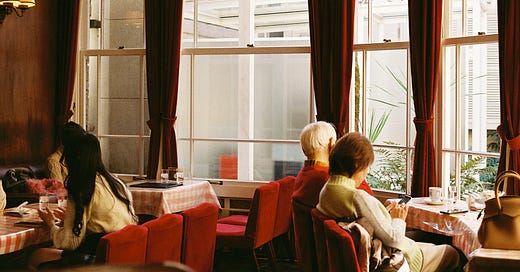



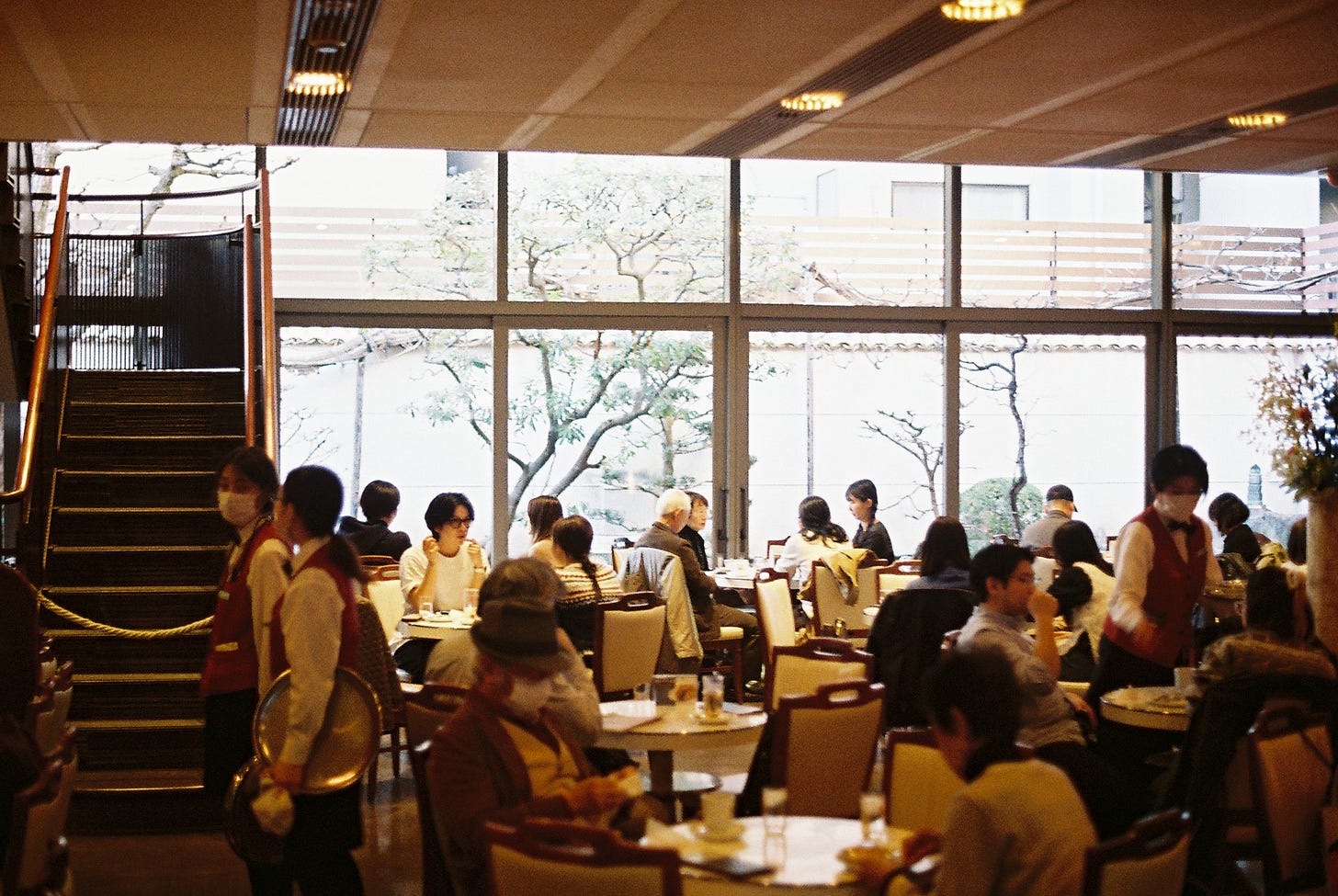
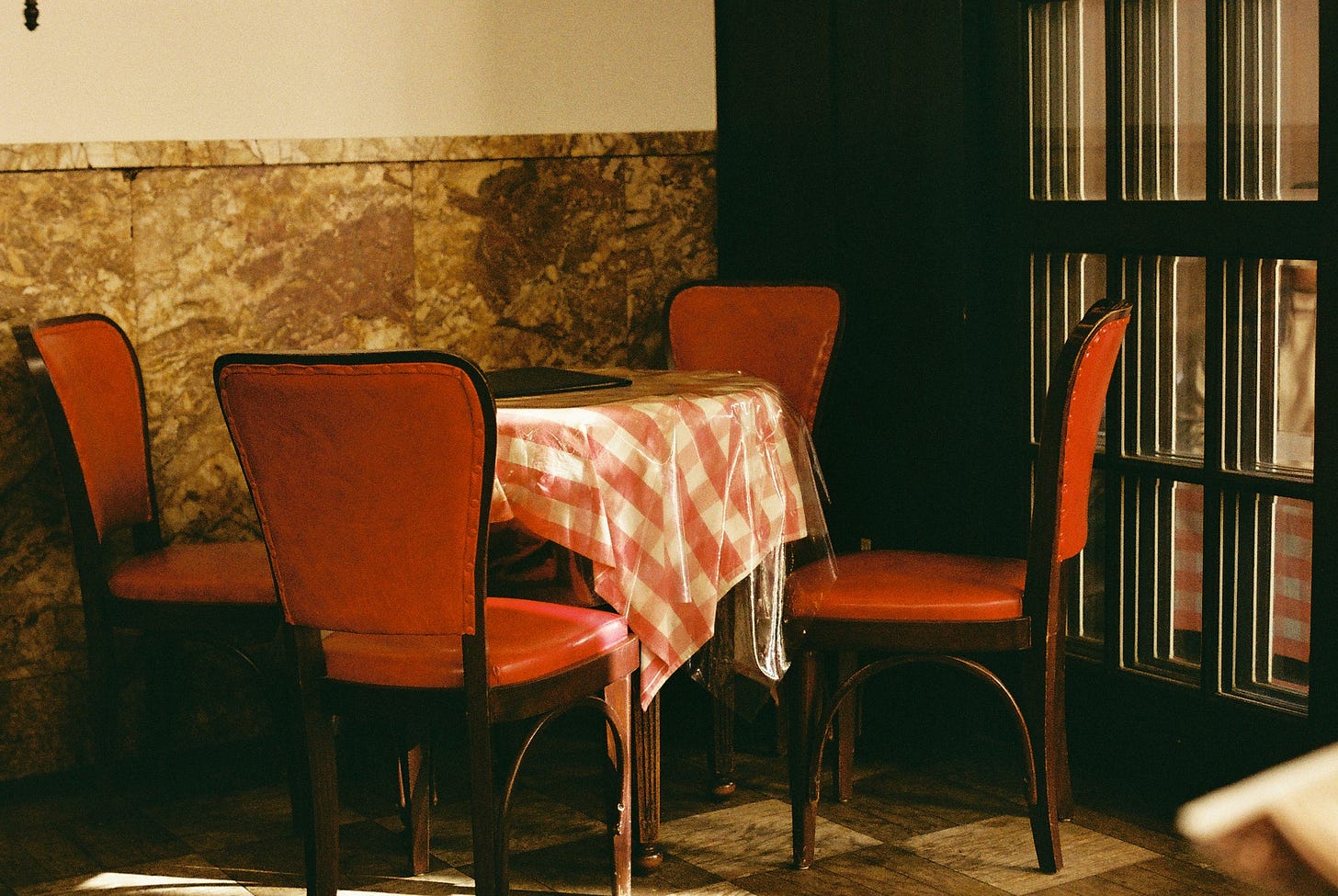
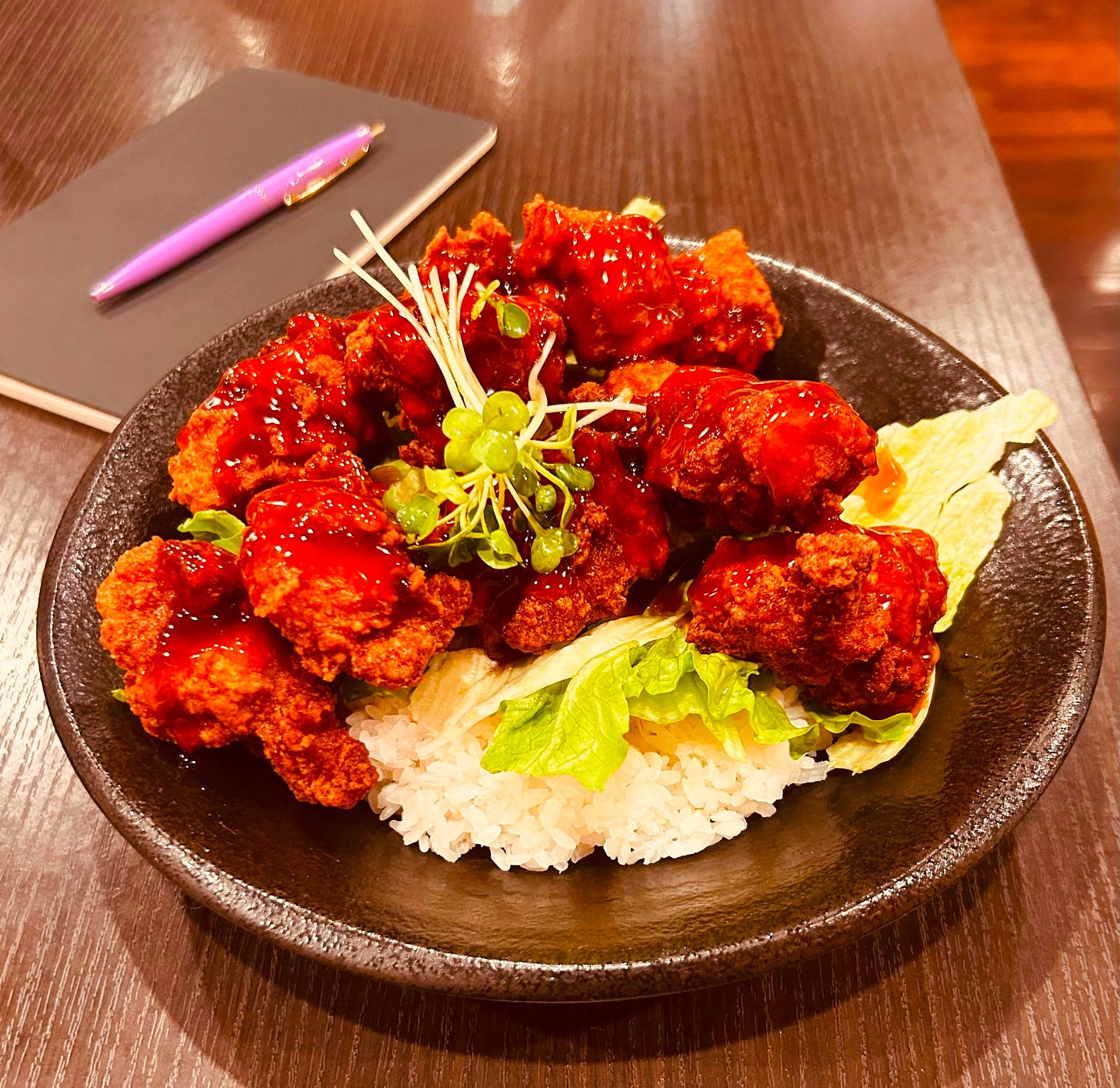
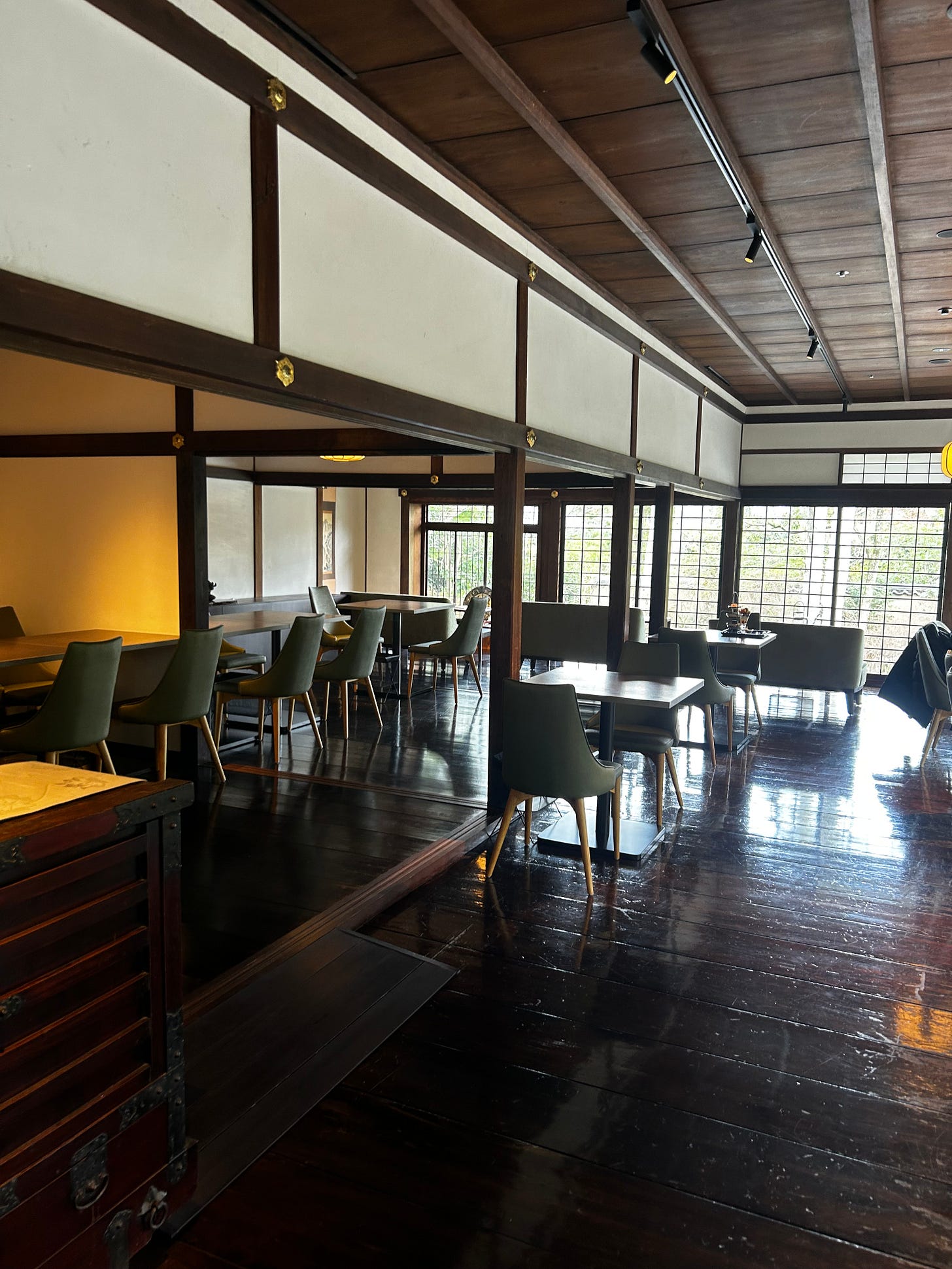
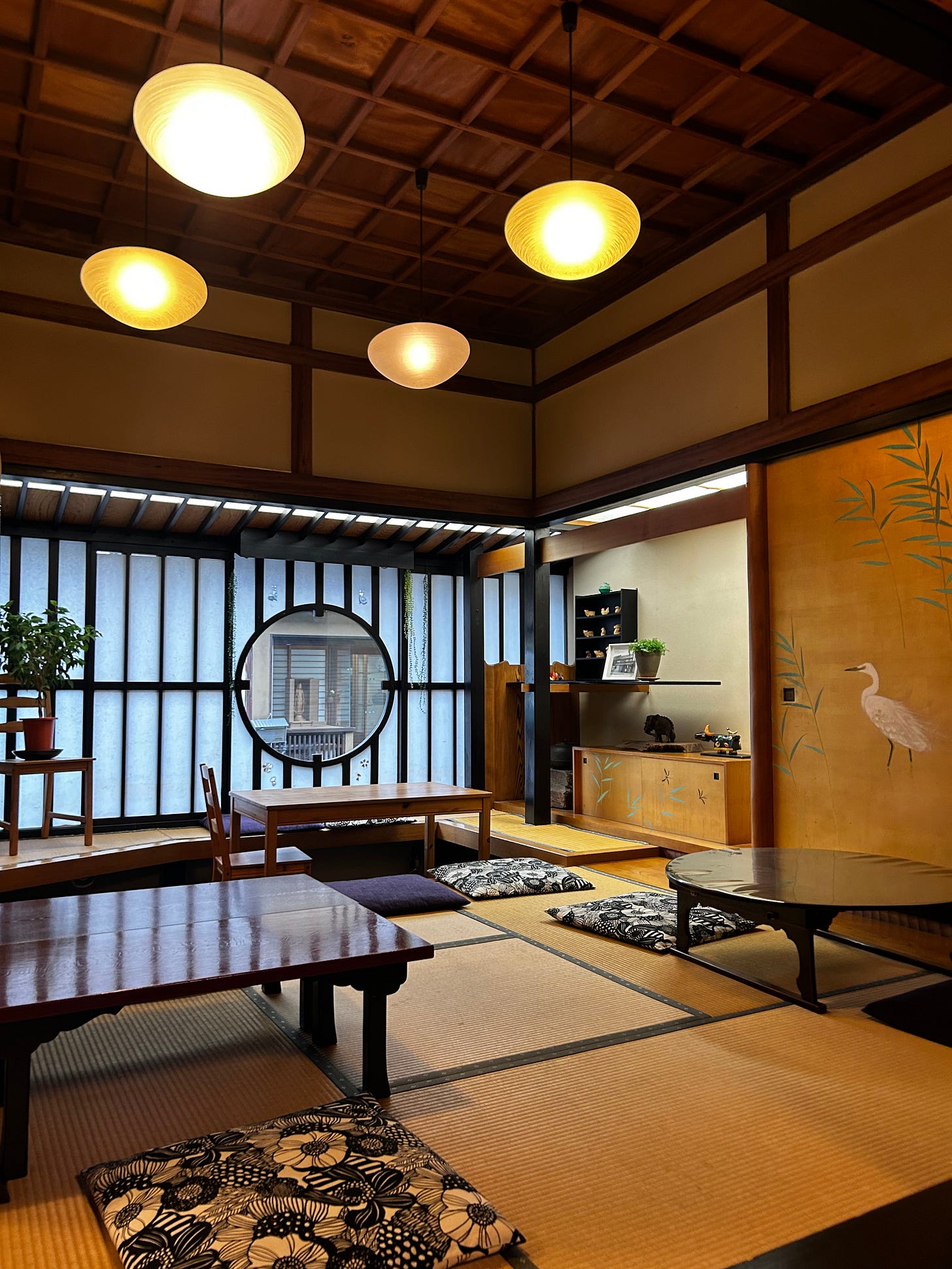
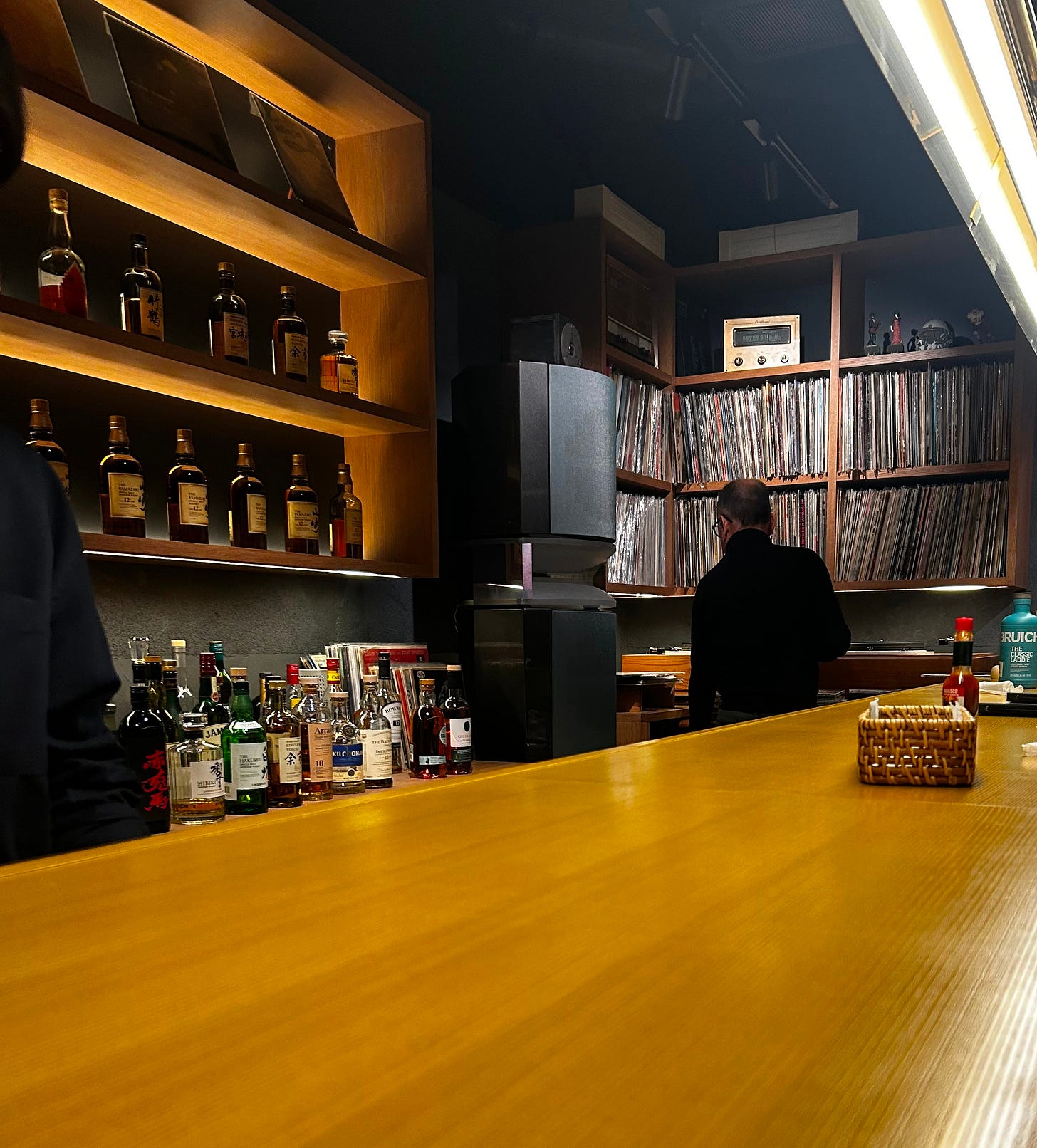
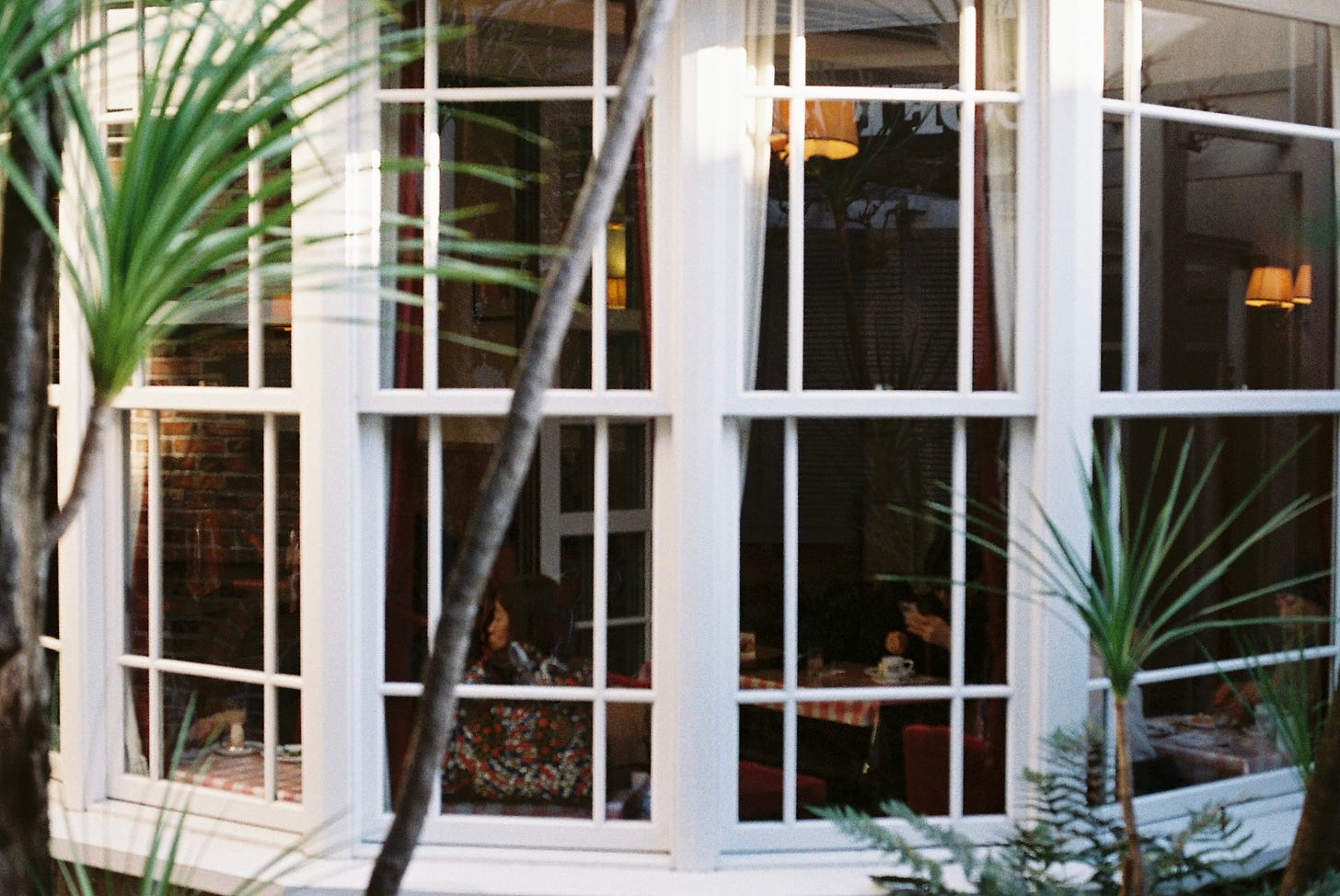
Fasciating and highly informative, as well as very well written.